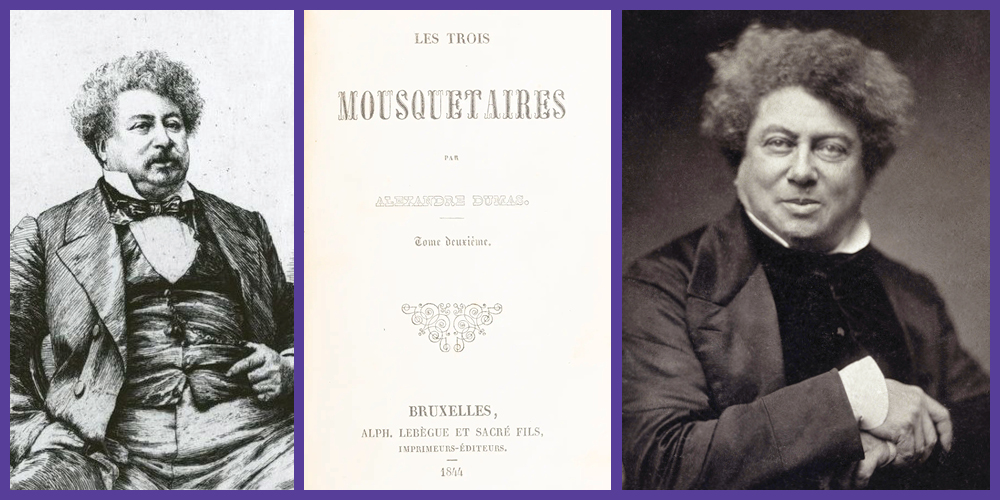
Alexandre Dumas (1802–1870) was raised in a poor family. His father, the son of a French Marquis and an enslaved Haitian woman, was a French general who was forced to retire early, never able to collect the back pay he was owed. His father’s early death and the injustices done to him—many due to racism—made a deep impression on the young Dumas, who later used the events to flavor his novels and plays with social conflict and drama. For many years Alexandre Dumas had to work day jobs to make ends meet, but in the off-hours (and sometimes on the company clock) he was always writing—a talent that eventually rewarded him with a series of successful plays, followed by several wildly popular magazine-serialized novels, including The Three Musketeers. Over the years, the prolific and increasingly famous writer endured financial and political turmoil, and was often criticized for his collaborative co-writing arrangements with other authors—accusations that often came from the French elite, who could not believe a mixed-race person could have attained such success on his own talents. After a series of financial setbacks, Dumas died in relative obscurity at age 68. Debate over his work continued after his death; critics over the centuries have argued about whether his novels are too easy to read, too action-packed, or even too numerous to take seriously. But he never had trouble connecting with readers—his books The Three Musketeers and The Count of Monte Cristo are among the most widely read novels in history, sealing his reputation as a storyteller who has sparked the imagination of millions.
For a view of the criticism leveled at Dumas during his lifetime and afterward, read a 2008 article from the New York Review of Books by Graham Robb, “The Pens of the Musketeer.”
For a fresh look at Alexandre Dumas’s place in the pantheon of Francophone authors, have a look at Eric Martone’s introduction to the book The Black Musketeer: Reevaluating Alexandre Dumas within the Francophone World.
For an overview of Dumas’s life and works, delve into this article on Encyclopedia.com.